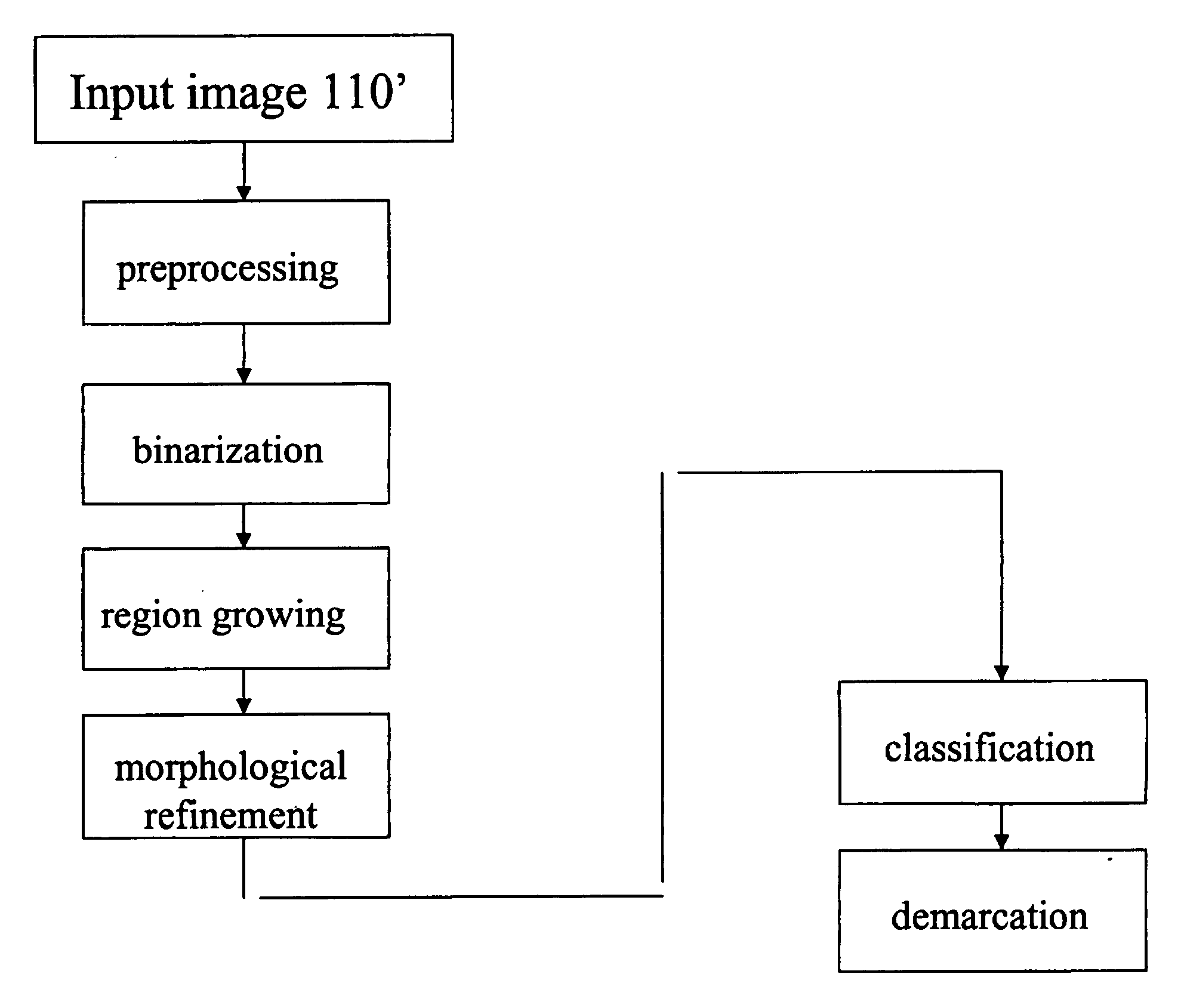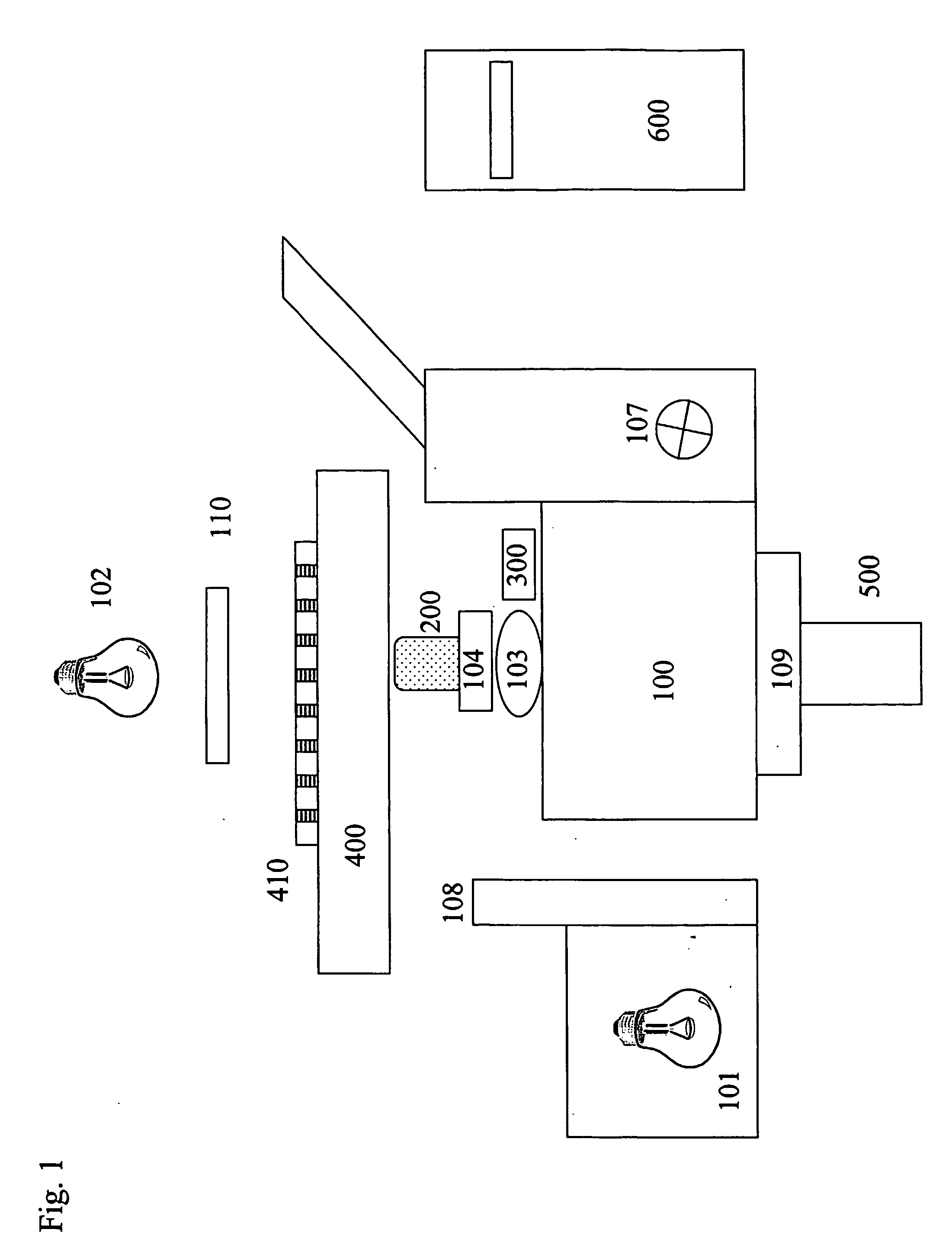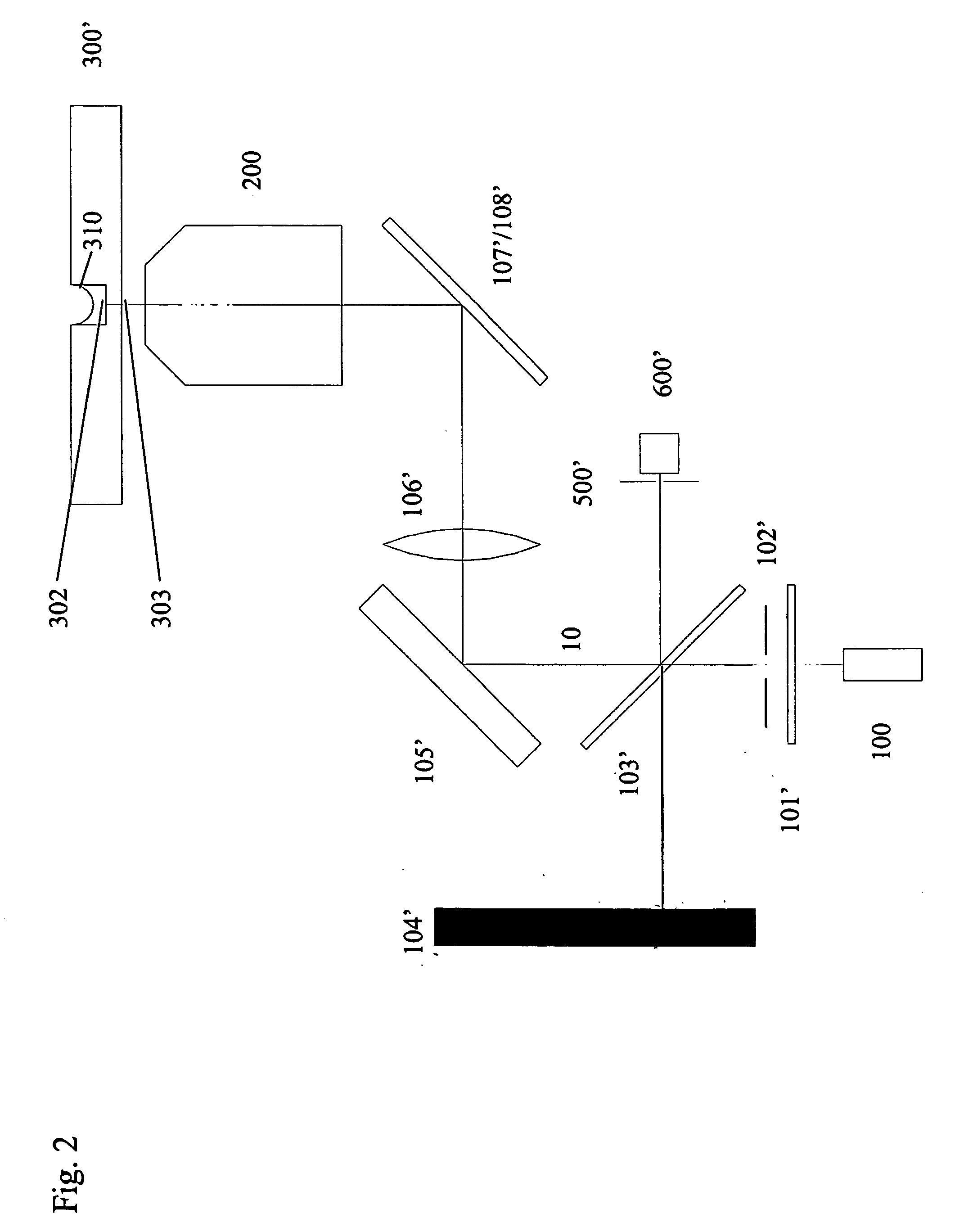System and methods for rapid and automated screening of cells
a cell and automated technology, applied in the field of automated cell screening in drug discovery, can solve the problems of small number of best-qualified hits, instruments and robotics used for hts cannot accommodate tissues, and the number of tests that could be done has become very large and will continue to grow
- Summary
- Abstract
- Description
- Claims
- Application Information
AI Technical Summary
Problems solved by technology
Method used
Image
Examples
Embodiment Construction
[0087] The denotations and abbreviations used in this description are defined in Table 1.
[0088] Turning now to the details of the drawings, FIG. 1 is a schematic block diagram illustrating the optical, mechanical and electrical components of the system of the present invention. Inverted microscope stand 100 is equipped with fluorescence epi-illuminator 101 and tungsten halogen transilluminator 102. Mounted on objective turret 103 is fast motor drive 104, preferably of the piezoelectric kind. Motor 104 moves objective 200 in the Z-dimension (vertically) so as to reach the best focus position. The best focus position is defined by confocal autofocus device 300 as monitored by digital computer 600. Microscope Z-focus drive 107 may also be used to move objective 200 in the Z-dimension, when software autofocus is selected. Filter changer 108 is positioned so as to present filters in the illumination path of illuminator 101, thereby selecting narrow band excitation illumination. Optional...
PUM
| Property | Measurement | Unit |
|---|---|---|
| distance | aaaaa | aaaaa |
| diameter | aaaaa | aaaaa |
| diameter | aaaaa | aaaaa |
Abstract
Description
Claims
Application Information
 Login to View More
Login to View More - R&D
- Intellectual Property
- Life Sciences
- Materials
- Tech Scout
- Unparalleled Data Quality
- Higher Quality Content
- 60% Fewer Hallucinations
Browse by: Latest US Patents, China's latest patents, Technical Efficacy Thesaurus, Application Domain, Technology Topic, Popular Technical Reports.
© 2025 PatSnap. All rights reserved.Legal|Privacy policy|Modern Slavery Act Transparency Statement|Sitemap|About US| Contact US: help@patsnap.com



